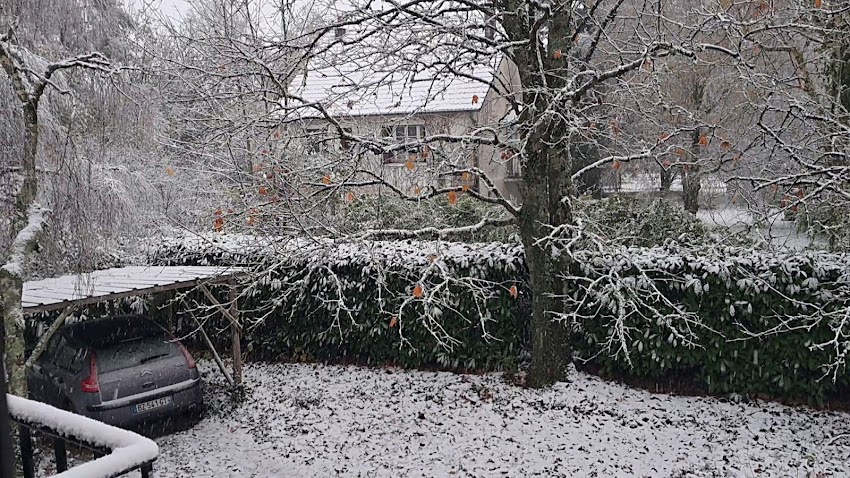The photos below are some that I took in Normandy at Carteret 20 years ago.
Walt and I had driven up there with our dog Collette to spend a few days along the Normandy coast.
Walt and I had driven up there with our dog Collette to spend a few days along the Normandy coast.
 The Englishmen who controlled the Carolina territory in the 17th and 18th centuries were appointed by the king of England and known as the lord's proprietors. During part of that time, the area that is now Carteret County N.C. was owned by John Carteret. His family came from the island of Jersey. The Carteret family also owned territory in New Jersey, where there is a town named Carteret. Remember, the first English colony in North America was located on Roanoke Island (probably...), a hundred miles up the coast from Carteret County. It was founded by Sir Walter Raleigh in 1585. When Raleigh went back to England to get supplies, it took him a few years to get back. By then his colony had disappeared. Nobody really knows what happened to the English settlers who lived there for those few years.
The Englishmen who controlled the Carolina territory in the 17th and 18th centuries were appointed by the king of England and known as the lord's proprietors. During part of that time, the area that is now Carteret County N.C. was owned by John Carteret. His family came from the island of Jersey. The Carteret family also owned territory in New Jersey, where there is a town named Carteret. Remember, the first English colony in North America was located on Roanoke Island (probably...), a hundred miles up the coast from Carteret County. It was founded by Sir Walter Raleigh in 1585. When Raleigh went back to England to get supplies, it took him a few years to get back. By then his colony had disappeared. Nobody really knows what happened to the English settlers who lived there for those few years.On the left is a photo of the cathedral in Coutances. It survived World War II despite heavy bombing that destroyed most of the town. Below is a church of a different style. It's in the town of Port-Bail, just five miles south of Carteret.


















































